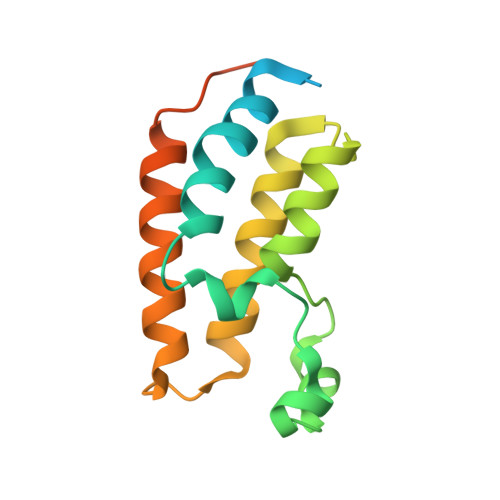The Discovery of I-Bet726 (Gsk1324726A), a Potent Tetrahydroquinoline Apoa1 Up-Regulator and Selective Bet Bromodomain Inhibitor.
Gosmini, R., Nguyen, V.L., Toum, J., Simon, C., Brusq, J.M., Krysa, G., Mirguet, O., Riou-Eymard, A.M., Boursier, E.V., Trottet, L., Bamborough, P., Clark, H., Chung, C.W., Cutler, L., Demont, E.H., Kaur, R., Lewis, A.J., Schilling, M.B., Soden, P.E., Taylor, S., Walker, A.L., Walker, M.D., Prinjha, R.K., Nicodeme, E.(2014) J Med Chem 57: 8111
- PubMed: 25249180
- DOI: https://doi.org/10.1021/jm5010539
- Primary Citation of Related Structures:
4UYF, 4UYG, 4UYH - PubMed Abstract:
Through their function as epigenetic readers of the histone code, the BET family of bromodomain-containing proteins regulate expression of multiple genes of therapeutic relevance, including those involved in tumor cell growth and inflammation. BET bromodomain inhibitors have profound antiproliferative and anti-inflammatory effects which translate into efficacy in oncology and inflammation models, and the first compounds have now progressed into clinical trials. The exciting biology of the BETs has led to great interest in the discovery of novel inhibitor classes. Here we describe the identification of a novel tetrahydroquinoline series through up-regulation of apolipoprotein A1 and the optimization into potent compounds active in murine models of septic shock and neuroblastoma. At the molecular level, these effects are produced by inhibition of BET bromodomains. X-ray crystallography reveals the interactions explaining the structure-activity relationships of binding. The resulting lead molecule, I-BET726, represents a new, potent, and selective class of tetrahydroquinoline-based BET inhibitors.
Organizational Affiliation:
Candidate Discovery, ‡Discovery Biology, §DMPK, GlaxoSmithKline Les Ulis, Centre de Recherches François Hyafil, GlaxoSmithKline R&D , 25 Avenue du Québec, 91140 Villebon-sur-Yvette, France.

















